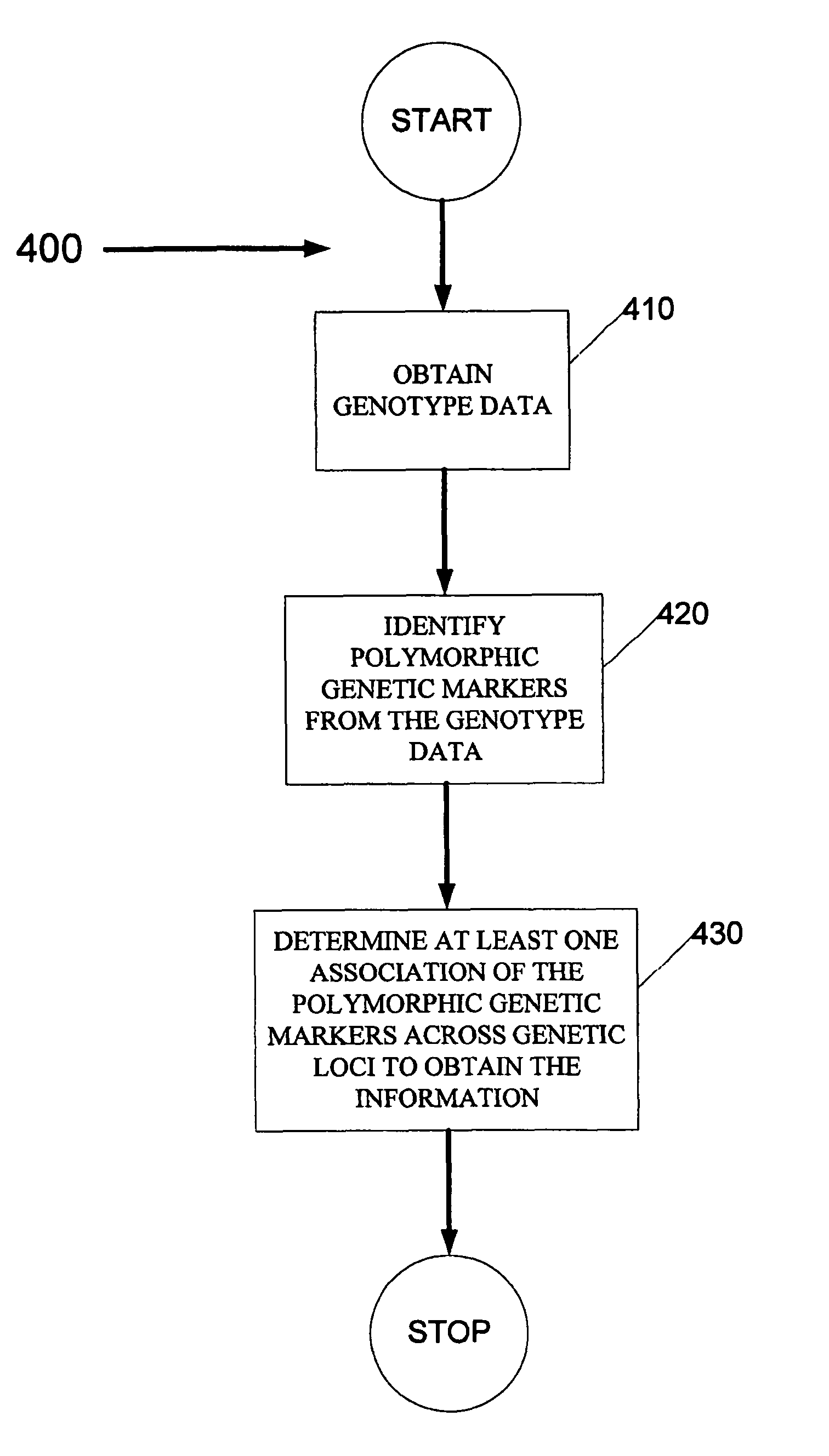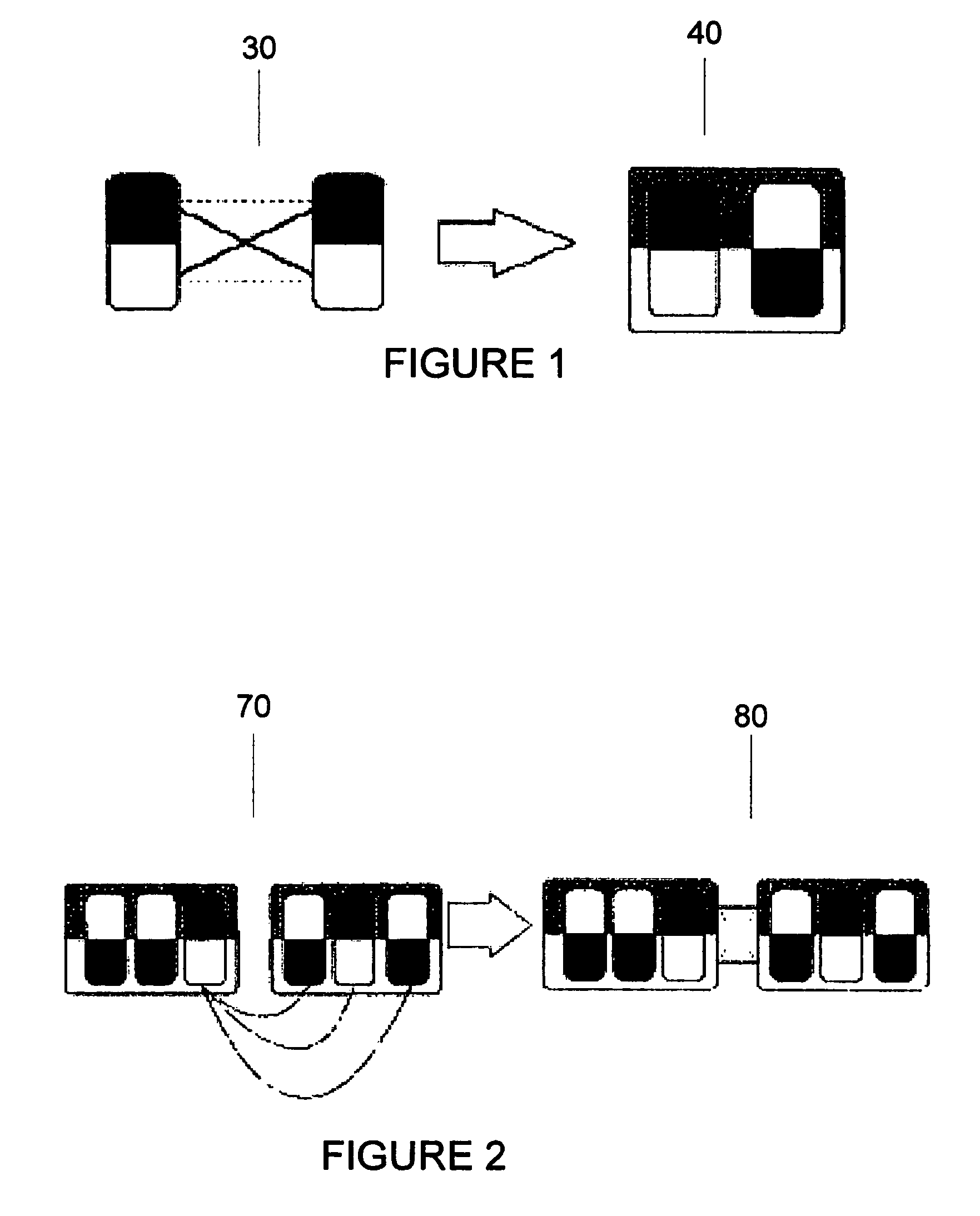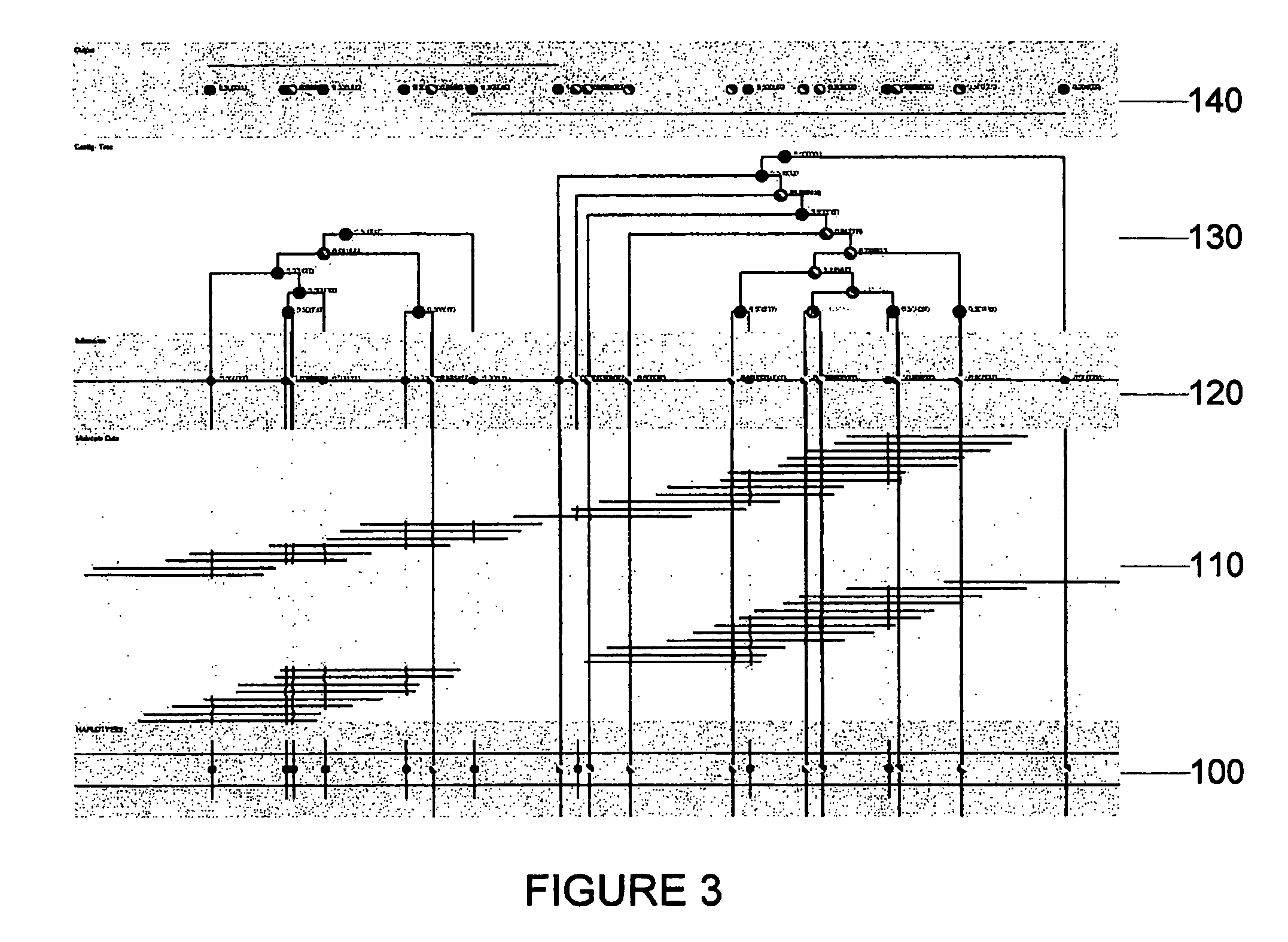Process, software arrangement and computer-accessible medium for obtaining information associated with a haplotype
- Summary
- Abstract
- Description
- Claims
- Application Information
AI Technical Summary
Benefits of technology
Problems solved by technology
Method used
Image
Examples
examples
RFLP Examples
[0090]The method, system and software arrangement of the exemplary embodiment of the present invention can be demonstrated on two simulated data sets composed of ordered restriction fragment lengths subject to sizing error. FIG. 3, which shows exemplary haplotypes, obtained using such exemplary embodiment is presented in the following bands:[0091]The band 100 nearest the bottom in the layout is the simulated haplotype.[0092]The second band 110 from the bottom is the haplotype molecule map for a diploid organism. These molecules (which are sorted into two haplotype classes in the layout) can be mixed and made available to the procedure of the present invention as a single set of genotype data.[0093]The third band 120 from the bottom shows the results of the EM-algorithm and the set of markers that are determined to have polymorphic alleles.[0094]The fourth band 130 in the layout provides the history of contig operations. From this tree, it is possible to view: 1) the dev...
PUM
| Property | Measurement | Unit |
|---|---|---|
| length | aaaaa | aaaaa |
| polymorphic | aaaaa | aaaaa |
| optical mapping | aaaaa | aaaaa |
Abstract
Description
Claims
Application Information
 Login to View More
Login to View More - R&D
- Intellectual Property
- Life Sciences
- Materials
- Tech Scout
- Unparalleled Data Quality
- Higher Quality Content
- 60% Fewer Hallucinations
Browse by: Latest US Patents, China's latest patents, Technical Efficacy Thesaurus, Application Domain, Technology Topic, Popular Technical Reports.
© 2025 PatSnap. All rights reserved.Legal|Privacy policy|Modern Slavery Act Transparency Statement|Sitemap|About US| Contact US: help@patsnap.com



